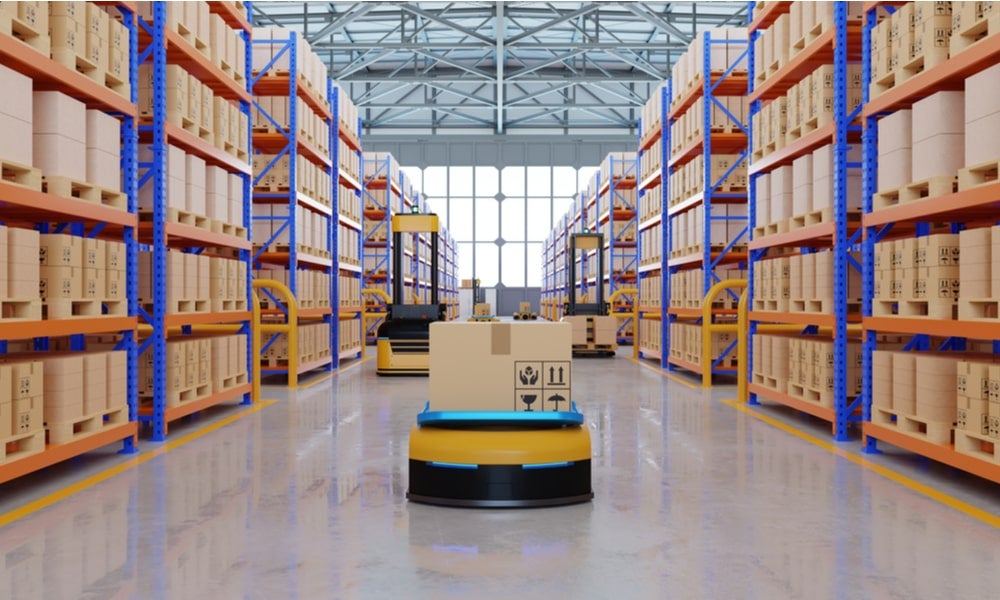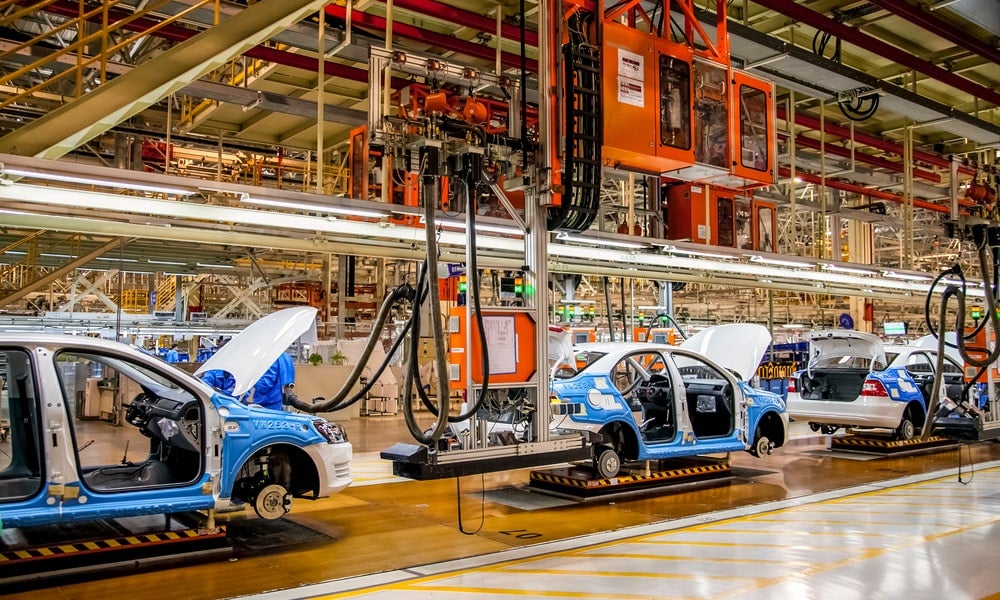Localisation: where effective supply chain management meets smart politics
With global threats from COVID to trade tensions exposing companies to costly disruptions, leaders should be thinking about supply chain resilience and regionalisation, write Salvatore Cantale and David Bach
This article is republished with permission from I by IMD, the knowledge platform of IMD Business School. You may access the original article here.
Over the past two decades, the increase in domestic labour costs has spurred many multinational organisations to shift their production overseas to lower-cost nations, and in particular China, which has become known as the ‘world’s factory’.
However, local wage growth has been eroding the benefits of labor cost arbitrage in recent years, and coronavirus has exposed the flaws in global supply chains, especially the risks of relying on just-in-time production and the focus on efficiency and globalisation.
When manufacturers and suppliers were hit by Covid, factories shut, shipping stalled, and costs soared, hitting international supply chains and subjecting companies to costly disruptions. Eurozone businesses on Thursday reported a marked slowdown in expansion as supply chain constraints pushed input costs to a more than two-decade high.
Backlogs of uncompleted orders rose sharply and suppliers’ delivery times lengthened at an increased rate in September, according to IHS Markit’s eurozone flash composite purchasing managers’ index. Globally, carmakers are acutely exposed and are cutting production targets because of the shortage of semiconductor chips and rising Covid cases in Asia. In the UK, retailers are warning that Christmas may be cancelled as supply chain bottlenecks and acute labor shortages cause food shortages on the shelves.

One response to the crisis has been to bring production back or near home, or at least diversify supply internationally, and so reduce exposure to supply shocks. The pressure for this new focus on resiliency and regionalisation was growing before Covid, owing to trade tensions and cost considerations, but the pandemic accelerated the shift.
Many multinationals that we work with are now looking very closely at cheaper manufacturing and assembly locations such as Vietnam and Indonesia, or closer to their home markets in advanced economies such as Mexico and Eastern Europe.
The case for the localisation of supply chains has been strengthened by a geopolitical environment that is more hostile to global trade. Overseas suppliers of key resources are becoming a potential political liability, in addition to a supply chain vulnerability.
Based on our research studies into how companies have implemented re-shoring (domestic production) or near-shoring (outsourcing to a nearby country), we have developed a model for evaluating such opportunities. There are four main considerations for companies that are thinking about reshaping their supply chains in response to global threats.
Read more: Manufacturing innovation: where are the real opportunities?
Supply chain costs are soaring
It’s not just rising wage costs that multinationals with long and lean supply chains are contending with. The cost of coordination has soared in recent years as supply chains have expanded internationally, reducing agility and responsiveness and creating uncertainty over lead times for customers.
Companies must consider the total acquisition cost incurred to make the component or service available for use, including packaging, transportation, customs, tariffs, exchange rate insurance, and so on. If these costs rise to the point where they become a competitive disadvantage, then the localisation of sourcing makes good business sense.
Reordering complex value chains may once have seemed economically unfeasible, but government subsidies have increasingly lowered the cost burden. Japan, for one, last year created a fund worth more than $2 billion to help companies shift production away from China and re-shore in Japan or diversify supply nearby.
In addition, the advent of Industry 4.0, driven by artificial intelligence and robotics, may enable companies to automate routine, labour-intensive activities that were outsourced to developing countries, and integrate multiple stages of production (manufacturing, distribution and warehousing) back home, further lowering costs.

Amazon is the market leader in warehouse automation following its 2012 acquisition of Kiva Systems, a mobile robotic fulfillment company. Amazon has hundreds of thousands of robots working in its warehouses, with direct labor cost savings amounting to billions of dollars by some estimates.
Automation will become increasingly appealing as a solution to the acute labor shortages facing many companies today. Indeed, a key consideration for re-shoring has been whether the country has developed a favourable ecosystem including the availability of skilled labor along with an extensive supplier base. Relying on a single supplier will inevitably raise costs as they are likely to drive a harder bargain at the negotiating table.
Demand is rising for locally sourced goods
The demand for locally sourced products has been rising in recent years, benefiting producers that can emphasise provenance and strengthening the case for localisation. The environmental and health benefits of local or seasonal produce, for example, are well established. More recently, consumers have shown a greater willingness to support local champions, especially those hit hard by Covid. Governments have fanned the flames, urging people to ‘buy local’.
Certain geographies are associated with uniqueness or innovation, and emphasising local production can enable companies to command a price premium. The mark-up is especially high in Switzerland’s watchmaking world, with the Swiss-made marque driving a premium of between 30-50 per cent at the top end of the market. The same phenomenon can be seen with Italian made olive oil, which is typically more expensive than Spain, Tunisia and Morocco. Champagne, meanwhile, often costs double the price of other sparkling wines.
If a big enough segment of consumers would buy local products, even at a premium, re-shoring should be considered. Localisation also makes sense if consumers are likely to value the faster fulfillment of their orders — because sourcing nearby accelerates speed to market.
Zara is a good example. The Spanish fashion brand owned by Inditex, the world’s biggest clothing retailer, makes basic products in lower-cost Asian countries, but it produces higher-end fashion in more costly but faster and flexible hubs like Spain, Portugal and Morocco. It can churn out new products in as little time as four weeks, so it remains responsive to changing trends and customer tastes and can easily tweak design and production. Agile supply has been a major factor behind Zara’s commercial success.
Geopolitical risks are intensifying
The risks of offshoring, including supplier viability, have become increasingly evident during Covid, pushing companies to consider localisation. A good example is the shortage of computer chips used in millions of products from cars to washing machines and smartphones. Semiconductor manufacturing is currently dominated by a small number of Taiwanese companies, pushing countries such as China to aim to become more self-reliant.
Faced with lack of supply, it makes sense to develop a relationship with suppliers in a nearby region to mitigate the supply risk. Another major hazard to consider is the geopolitically charged trading environment, which is reflected by trade wars, Brexit and the rise of vaccine nationalism.

The US-China decoupling has led some companies to shift suppliers from China to other locations, along with concerns about intellectual property theft. US president Joe Biden has maintained the tough stance on trade taken by his predecessor Donald Trump. Biden wants the US to rely less on foreign supplies for crucial imported components such as semiconductors and pharmaceuticals.
Many other governments are more nervous about depending on foreign suppliers for key resources. Business leaders must understand the degree of perceived foreign dependency in the key markets in which they operate, and be ready to align their supply chains around key political priorities.
For certain products in sensitive categories, there might be enough political pressure and incentives such as subsidies to make it worthwhile to source locally. Take, as an example, Europe’s largest carmaker Volkswagen. The company is investing heavily in new battery factories across Europe, reducing its reliance on Asian producers, to help the German group accelerate its push into electric vehicles. That’s not just smart politics; it’s good supply chain management.
Environmental concerns have grown
Companies will need to consider their environmental, social and governance (ESG) responsibilities. The environmental impact of transporting goods and components over long distances is driving a push to localise production, especially in the textiles industry.
The environmental benefits of manufacturing closer to home are becoming increasingly evident. Production in advanced economies can be more efficient in some cases due to the lower carbon intensity of electricity generation. For example, one report estimates that a textiles producer in China would emit about 90 per cent more greenhouse gas while using the same energy as in the UK, which is cleaner and more efficient. Turkey and Bangladesh would emit around 70 per cent and 24 per cent more emissions respectively than Britain.
Read more: How Singapore is improving food innovation, sustainability and productivity
Many multinational companies shifted production overseas partly in response to higher environmental compliance at home, essentially offshoring their pollution to less-regulated countries in the developing world. However, organisations are coming under mounting pressure from consumers, investors and politicians to reduce the environmental footprint of their operations, and cascade responsible practices down through their value chains.
Regulation is tightening, with governments increasingly adamant that foreign suppliers meet acceptable sustainability standards, so business leaders will need to carry out greater due diligence on their suppliers. Some multinational enterprises have pledged to source supplies from only those companies that uphold fair labor practices and environmental protections.
A very important factor to consider is the potential impact on the organisation’s reputation due to the conditions in the countries from which they source goods or services. For example, allegations of forced labor in the Xinjiang region have pushed many global brands including Nike and H&M to abandon Chinese cotton on human rights grounds. The moves provoked a fierce backlash from Chinese consumers, however, underscoring just how much of a delicate undertaking sourcing has become.
Salvatore Cantale is Professor of Finance at IMD. His major research and consulting interests are in value creation, valuation, and the way in which corporations structure liabilities and choose financing options. David Bach is Professor of Strategy and Political Economy at IMD. He helps managers and senior executives develop a strategic lens for the nexus of business and politics.
